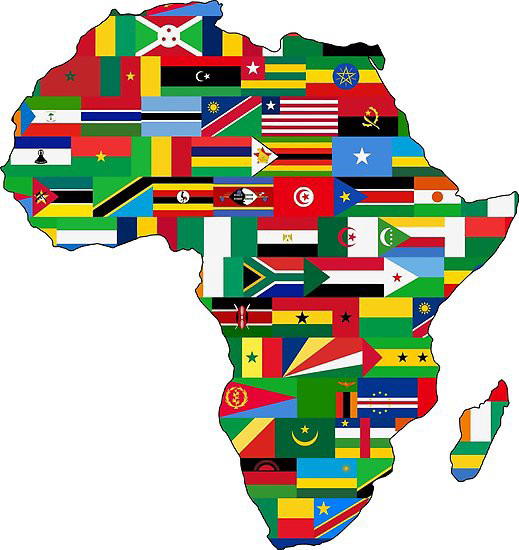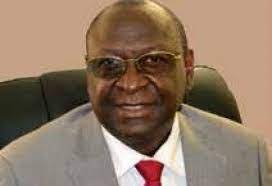
By Elvis Kolawole
The continent that’s been described as the last frontier seems to be on its way to deliver on its enormous promise. High economic growth rates, combined with the world’s youngest and fastest-growing population continues to fuel optimism amongst observers.
The increasing trend of political stability and cooperation within Africa is also a positive sign. With initiatives like the African Continental Free Trade Area (AfCFTA) and Agenda 2063, a blueprint for socio-economic transformation, Africans are showing ambitions for the future.
However, just like Brazil, Russia, India, China, and South Africa (BRICS) in recent years, Africa will need strong strategic partnerships to make things happen. That’s where Europe comes in
European Dominance in Africa
Contrary to popular belief, Europe is still comfortably Africa’s largest trading partner. With 36% of exports and 33% of imports, the EU is ahead of other trade partners such as China, which accounts for 9% of exports and 13% of imports. This is a position Brussels intends to keep for the foreseeable future.
Source: ecdpm
Furthermore, there has been a desire on both sides to evolve the relationship from the traditional donor-recipient dynamic to more of an equal partnership. This remains a strategic priority, despite the cancellation of an Africa-EU Leaders’ meeting last December , a prelude to the 6th European Union – African Union Summit this year.
The North African Gatekeepers
Their unique geographic and socio-economic position makes the North African states key to the future of collaboration with the EU. Nowhere is this more apparent than the three emerging Trans-Mediterranean Corridors emerging from Europe into Africa;

The West Africa-to-Western Europe corridor going through Morocco
The East Africa-to-Eastern Mediterranean corridor based in Egypt, and
The central corridor based in Algeria
Source: konrad adenauer stiftung
This unique situation gives North Africa (and the rest of the continent) a once-in-a-generation opportunity to negotiate favourable long term deals that could secure prosperity for the region.
The West Africa-to-Western Europe corridor
This corridor is the one at its most advanced stage on the continent, owing to several factors.
Morocco is benefitting from substantial investments in its infrastructure and industrial base. One such investment is the Al-Boraq high-speed rail line – Africa’s first high-speed railway. The first segment of the project cost $2.3 billion and was built by a French-Morrocoan Joint venture. This line is set to better connect Casablanca, an important economic centre to Tangier, a port city that is also receiving its fair share of investments. In the longer term, Rabat sees this as part of a bigger plan to connect Tangier to Lagouira (La Güera), a town on the southern tip of the Western Sahara region (a territory Morocco considers its own).
In Tangier, the Tanger Med port is being expanded as part of a $7 billion plan to scale up and overhaul Morocco’s system of ports. Recent expansions to the Tanger Med have made it the largest port in the Mediterranean, surpassing the Spanish Algeciras and Valencia ports.
Source: Shutterstock
Due to these infrastructure improvements, french automaker Groupe PSA opened a $630 million factory in Kenitra’s Atlantic Free Zone, north of Rabat. This is in addition to other major auto industry firms from Germany, Spain, Italy, etc; making Morrocco the leading automotive industry manufacturer on the continent.
Asides from France, EU interests are not well represented in the country and this gap is being filled by the Chinese and Russians. CITIC Dicastal, a Chinese automotive components manufacturer is intent on integrating itself into the French-led value chain by opening a $400 million plant in Kénitra as well. Also, plans to construct the Chinese-funded Tangier Tech City, a $10 billion high-tech industrial zone seem to be underway despite initial challenges. Asides that, Russian state development corporation VEB is set to build a $2.3-billion-dollar petrochemical complex and oil refinery in Northern Morocco.
Morocco’s willingness to diversify its strategic relations and ramp up infrastructure investments is attracting the right kind of attention. This bodes well for a corridor that could connect the Mediterranean’s largest port to parts of west Africa.
The Central African Corridor
This is a long, extensive corridor that’s part of a larger Scandanavian-Mediterranean network with its base at the port of Taranto, Italy. It enters Africa through Tunisian ports, then either goes through Algeria all the way to Lagos, Nigeria or takes a slightly eastward route from Tunisia to N’djamena, Chad, and even further south.
.
Source: Austria Institut für Europa und Sicherheitspolitik (AIES)
Recently, the Turkey-Italy-Tunisia transportation network was formed to further smoothen commercial connectivity within the region. The core commercial routes begin from Turkey’s major ports on the Aegean Sea to Taranto, Italy and, from there, to Malta and finally the ports of Bizerte and Sfax in Tunisia. The Turkish-owned port of Taranto which is the corridor’s central hub is set to undergo a $450 million renovation and expansion. These developments take care of the Mediterranean side, but there’s more to be done on the African side of things.
Being Algeria’s largest trade partner, Italy seems keen on strengthening ties to help make the corridor mutually rewarding. Italian construction firms are heavily involved in the modernization of Algeria’s road system, alongside the existing Trans-Mediterranean (Transmed) natural gas pipeline that links Algeria, Tunisia, Sicily, and the Italian mainland. Interestingly, there are also plans to link the electricity grids of these three countries by 2025 upon the completion of a 192 km-long, 600MW undersea cable between Tunisia and Sicily.
To smoothen the connectivity down south, a 4500 km Trans-Sahara Highway is set to be completed. It’s set to connect the Algerian coast to Mali, Niger, Chad, and Nigeria, the continent’s largest economy.
The East African Corridor
The major player in this corridor is Egypt, a nation with the largest population of any Mediterranean nation and the third-largest in Africa. Its large offshore natural gas deposits and smart energy policies have placed it on the verge of becoming both a natural gas and electricity export hub – a development that could revolutionize energy connectivity between Europe, Africa, and the Middle East.
Source: Research Gate
Egypt is key to the success of an East Africa-to-Eastern Mediterranean commercial corridor that reaches the European mainland through the Chinese-run transhipment port in Piraeus, Greece. On the Mediterranean side, Egypt maintains several ports on its Mediterranean coast and has been engaged in a program to increase its total container capacity to partner with Piraeus as the dominant transhipment hubs in the Eastern Mediterranean. The Read Seaport at Sokhna is set to undergo a $520 million expansion that’s intended to better serve CMA CGM Jeddex service that connects Sokhna to the East African ports of Mogadishu and Mombasa. There’s also Chinese-led investment in Egypt’s Suez Canal Economic Zone mega-project, a major part of the nations’ Sustainable Development Strategy: Vision 2030.
Source: Wikipedia
The corridor’s African segment will be primarily based on rail connectivity and secondarily on road connectivity. A 10,228 km Cape Town-to-Cairo highway known as the Trans-African Highway 4 (TAH-4) should ideally connect eight other countries from southern, East Africa, and the Horn of Africa to Egypt. However, conflicts over Grand Ethiopian Renaissance Dam (GERD) on the Blue Nile and the ongoing ethnic insurgency in Ethiopia’s northern Tigray region may derail TAH-4’s role in the corridor. Consequently, Cairo has already prioritized shifting its commercial transportation from road to rail.
On 25 October 2020, Egypt and Sudan signed a new transportation connectivity agreement that could forge a new north-south rail corridor with the White Nile countries with whom Egypt has better relations. It will extend southward towards Tanzania and the other East African countries around the wider Lake Victoria Basin.
In Conclusion
Though there’s no lack of intent on both sides, much more can be done to foster the development of these commercial corridors and make the interests of both continents more intertwined.
There’s a worrying absence of a coherent policy to facilitate seamless collaboration between the European Union and African states, especially the North African gatekeepers. This void is already being filled by the likes of China, Russia, and the GCC States.
However, this can be remedied in the next EU-AU summit and reliably establish a framework for a lasting, mutually rewarding partnership between both parties.



















